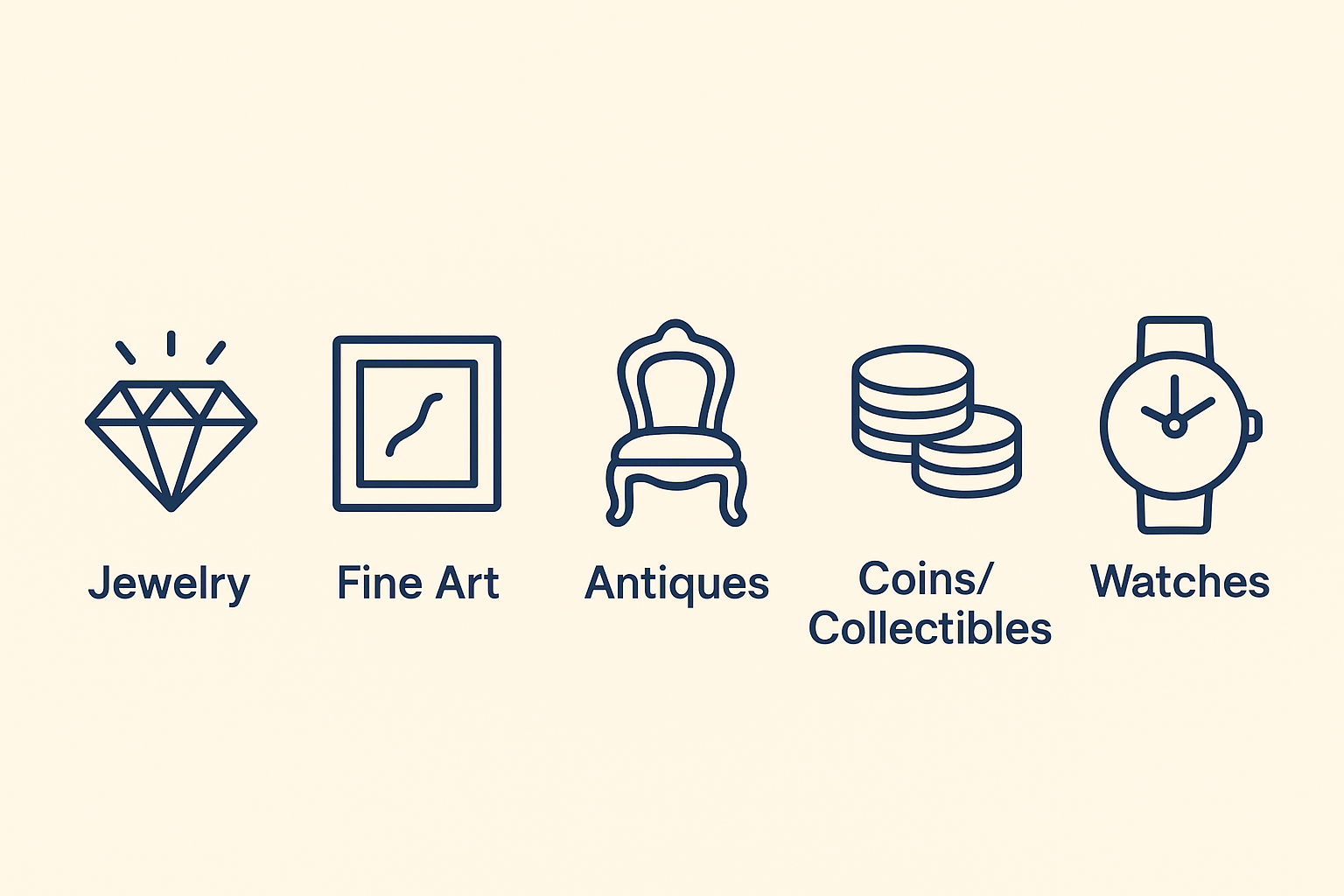







If you’re wondering whether your jewelry, art, or antiques need fresh appraisals, you’re asking the right question. Outdated valuations can leave you underinsured by thousands of dollars or paying premiums on inflated values. The good news? You can protect yourself with a strategic reappraisal schedule that matches your specific valuables and current market conditions.
Whether you’re managing a valuable jewelry collection, fine art portfolio, or family heirlooms, understanding when to update your appraisals ensures you’re properly protected and making informed financial decisions.
KEY INSIGHT: Insurers pay replacement cost, not appraisal amounts.
Your grandmother’s diamond ring appraised at $5,000 in 2020 could easily be worth $6,500 today thanks to gold’s price surge in 2024. But if you’re still insured for the old amount, you’re facing a potential $1,500 loss if something happens. Conversely, that contemporary art piece valued at $15,000 during the 2022 boom might only be worth $10,000 in today’s contracted market, meaning you’re overpaying for insurance coverage you don’t need.
Market volatility, inflation, and changing demand regularly shift values both up and down. Scheduled valuable appraisals serve as your financial insurance policy, ensuring your coverage matches reality.
CRITICAL REMINDER: A $200 reappraisal that discovers $2,000 in increased value provides 1000% ROI in protection value.
The short answer: every 2-3 years for most jewelry. This frequency accounts for precious metal price volatility. Gold’s recent 27% increase means jewelry appraisals before 2024 is likely undervalued.
Most insurers recommend 2-year cycles. However, occasional-wear jewelry stored safely can extend to 5 years during stable periods. Major price swings of 15% or more should trigger immediate reappraisal regardless of schedule.
Fine art follows a 3-5 year cycle, but market volatility can shorten this. High-value collections warrant annual appraisals, while standard collections follow 3-5 year schedules. Contemporary art requires frequent updates because emerging artists’ values can swing year-to-year.
MARKET UPDATE: High-end artworks over $10M dropped 39% in 2024. Boom-era appraisals need review.
Antiques typically follow 3-5 year cycles, though today’s market runs “soft” with many pieces depreciating. Cultural shifts affect values for instance, victorian furniture struggles while mid-century modern surges. Environmental damage from humidity or pests can also reduce values.

Standard appraisals remain valid for 2-5 years depending on the item and market conditions. With each type of valuable (jewelry, art, antiques, coins, collectibles, watches), there is a recommended frequency of appraisal. For insurance purposes, most insurers accept appraisals for 2-3 years, with some extending to 5 years for stable categories like antiques. IRS requirements for charitable donations over $5,000 need qualified appraisals dated no earlier than 60 days before donation.
TAKE NOTE: Market changes and legal proceedings may require fresh appraisals regardless of existing documentation age.
Professional standards from organizations like the American Society of Appraisers emphasize that updating an existing appraisal isn’t an extension of prior work, it’s a completely new assignment requiring fresh research, inspection, and documentation. This distinction matters because it affects the reliability of your valuation.
Q. How much do reappraisals cost?
A. Jewelry appraisals run $100-200 per piece, art ranges $1,000-2,000 per piece. The investment typically represents 1-5% of item value while protecting against major losses.
Q. Do insurance companies require updated appraisals?
A. Check your specific policy requirements as thresholds vary by company. Most insurers accept appraisals for 2-3 years, with some extending to 5 years for stable categories.
Q. When should I reappraise immediately?
A. After damage, inheritance, major market movements, authentication discoveries, or life events like divorce. Don’t wait for your regular schedule in these situations.

When selecting an appraiser, verify USPAP compliance and professional designations like ASA, ISA, or AAA. Specialized expertise in your asset category matters—a jewelry appraiser may not understand fine art markets.
You should also ensure independence from conflicts of interest. Avoid appraisers who also buy or sell items in your category.
AppraiseItNow’s certified professionals provide comprehensive valuations across all asset categories. Our USPAP-compliant appraisers deliver accurate, defensible appraisals that meet insurance, tax, and legal standards. Contact us today to schedule your reappraisal and ensure proper protection with current, professional documentation.




